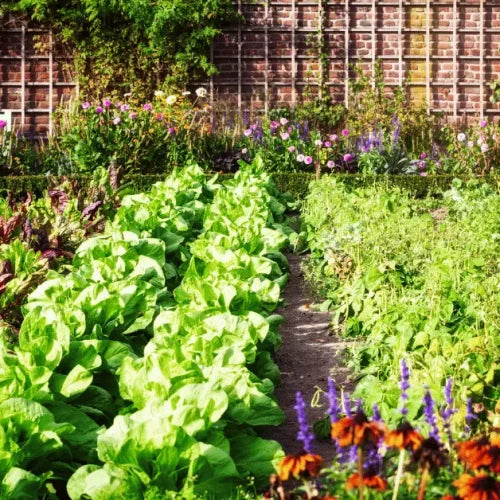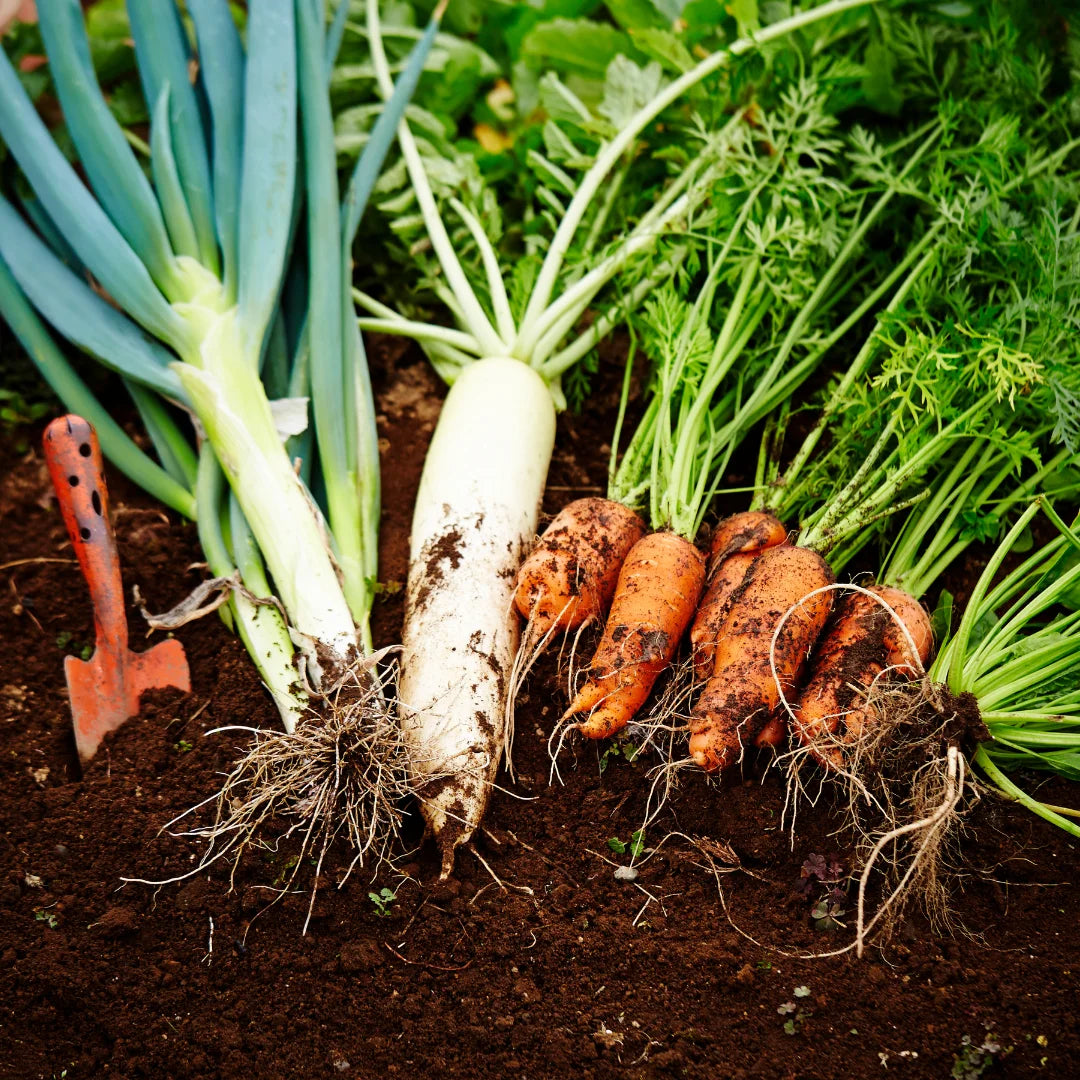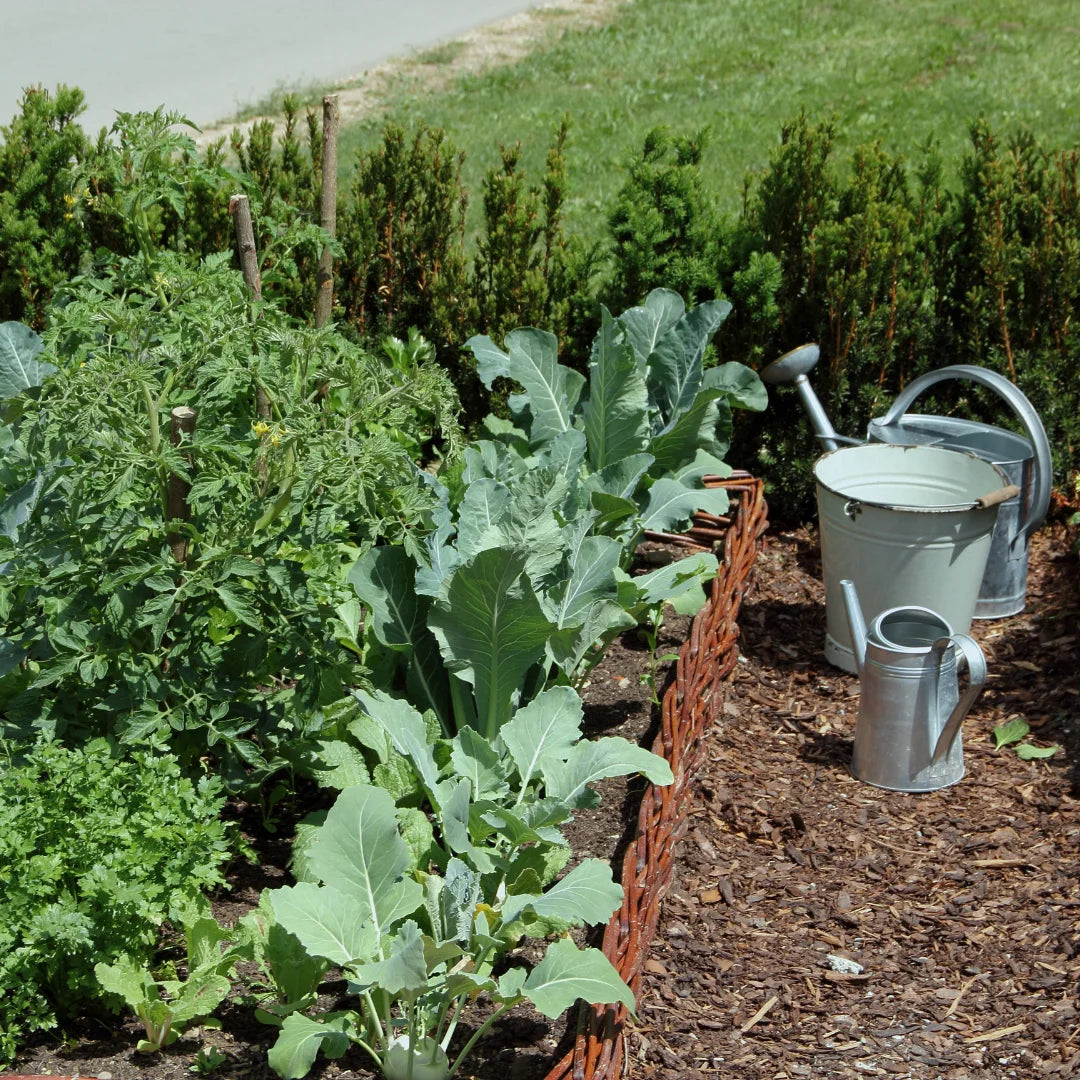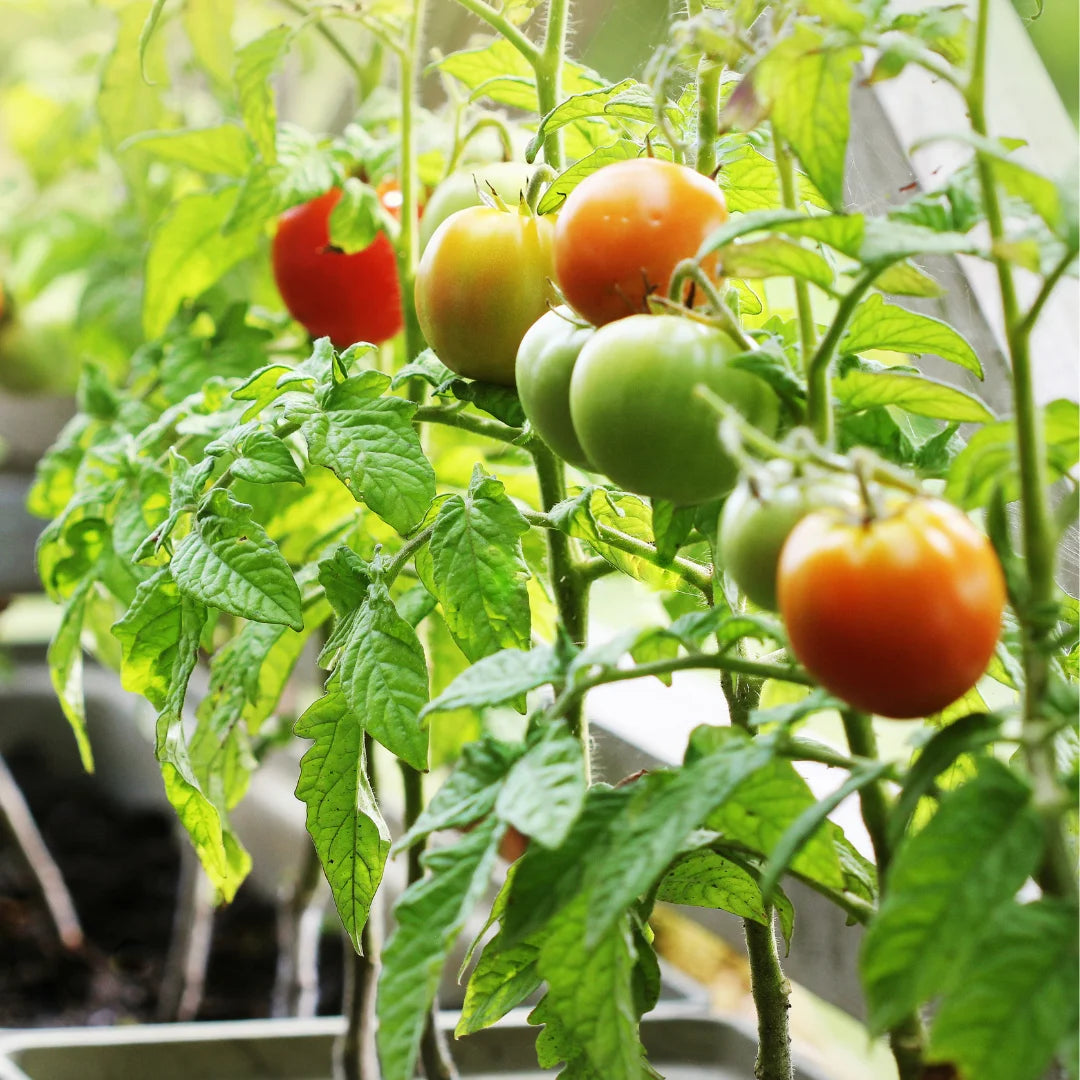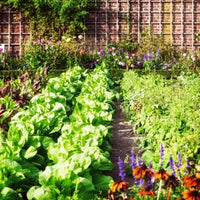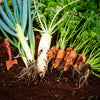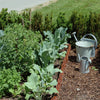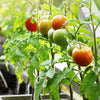Take a moment to imagine the satisfaction of harvesting your own organic vegetables from the backyard garden. This is increasingly becoming a reality for many Australians, as vegetable gardening continues to rise in popularity across the country’s growing regions. From suburban backyards and urban balconies, to outback homesteads and coastal market gardens, more people are discovering that they can create their own sustainable food supply – one carrot at a time.
To illustrate this trend, take Robyn Arnold from inner-city Brisbane — despite having no prior experience with vegetable gardening whatsoever, she decided to give it a go on her balcony earlier last year. After some trial and error (and plenty of fertiliser!), Robyn has since been able to harvest enough greens for herself and even share extras with family and friends. She now reports feeling an immense sense of pride every time she looks outside her window at her lush little veggie patch!
It’s stories like these which demonstrate just how accessible vegetable gardening has become – not only does it provide us with fresh produce free from pesticides or other chemicals but also offers health benefits such as improved physical activity levels due to its labour intensive nature. With the right soil conditions, seeds, knowledge and dedication anyone can start their very own vegetable patch today – helping themselves whilst simultaneously making a positive contribution towards our nation’s sustainability goals.
Climate Considerations For Growing Vegetables In Australia
As with any form of gardening, the success of vegetable cultivation depends on being able to meet certain climate conditions. Australia is well-known for its wide variety of climates and weather patterns, making it difficult to determine which vegetables are suitable for planting in different regions. Fortunately, there are several steps that can be taken to ensure your vegetable garden is successful no matter where you live.
Firstly, understanding the amount of sun exposure available in your area is essential when growing vegetables. Different plants require varying levels of sunlight, so having an idea of how much will reach your plot or container garden will help you choose what’s best. In addition, pay attention to local temperatures as some vegetables need warm soil in order to germinate and grow successfully. If necessary, consider installing shade cloth or other devices to protect vulnerable plants from extreme heat during summer months.
Lastly, rainfall should also be considered before starting a vegetable garden. Some areas receive more precipitation than others – if this applies to you, keep an eye out for disease-resistant varieties that have been bred specifically for wetter climates. On the flip side, make sure not to overwater; too much moisture can lead to poor drainage and root rot in certain types of vegetables. With these simple tips in mind, you’ll soon find yourself harvesting delicious produce all year round!
What Vegetables Are Suitable For Planting In Australia?
Now that you’ve considered the climate of your vegetable garden, it’s time to think about what types of vegetables are suitable for planting in Australia. With its diverse range of climates and temperatures, there is a wide variety of edible plants available – from leafy greens like spinach or kale to root vegetables such as potatoes or carrots.
In addition to regional variations, soil type should also factor into your decision when selecting which vegetables to plant. Clay soils retain moisture longer but can be prone to compaction and poor drainage; conversely, sandy soils require additional watering but offer excellent aeration and drainage. Understanding these nuances and adjusting your soil where necessary will help ensure your chosen veggies are able thrive in their new environment.
Finally, before starting your own vegetable patch make sure you research any local pests or diseases that might affect growth. While most common problems can easily be avoided by using composts or mulches for pest control and crop rotation for disease prevention, being aware of potential issues beforehand will save time and effort down the line. By taking all these factors into consideration, you’ll soon find yourself reaping the rewards of an abundant harvest!
When Is The Best Time To Plant Vegetables In Australia?
Once you’ve chosen the right vegetables for your climate and soil type, it’s time to think about when to plant them. Generally speaking, Australia is divided into two distinct growing seasons – summer (or warm-season) crops are planted from October through April while winter (or cool-season) veggies can be sown from May until September. It’s important to note that some types of vegetables may not tolerate extreme weather conditions or prefer particular temperatures.
When deciding on a planting date for your vegetable garden, also consider any local events such as frosts or prolonged spells of heat that might affect crop growth. If necessary, adjust your schedule accordingly by either starting earlier in the season or delaying harvest times until more favourable conditions arrive. Additionally, remember that most plants take between 6-10 weeks before they reach maturity so make sure to plan ahead.
TIP: Keep a diary throughout the year with details of what was planted when, how well each variety performed and any lessons learned along the way – this will help inform future planning decisions and ensure successful harvests every time! With these helpful tips in mind, you’re now ready to start planning out your very own vegetable garden!
Planning Your Vegetable Garden
Creating a vegetable garden is an exciting and rewarding experience, and planning ahead will help ensure the best results. To get started, take a look at your outdoor space to decide where it’s most suitable for planting. Think about how much sun and shade your plants need, as well as any soil variations in different parts of the garden that you may want to consider – this can be done by taking samples from various spots and testing them yourself or getting professional advice.
Once you’ve chosen a location, it’s time to start thinking about what type of vegetables you’d like to grow! If you’re just starting out, easy-to-grow varieties such as tomatoes and lettuce are great choices – they provide quick harvests with minimal effort. Also think about whether there are certain things that would make gardening easier for you; could raised beds save on bending down? Would trellises support heavier crops? Planning these details up front can save lots of hard work later on!
Lastly, don’t forget to factor in some fun elements too – why not add flowers around the edges for colour or plant herbs amongst your vegetables for added flavour? With careful consideration put into each aspect of your garden design, growing delicious homegrown produce has never been easier!
Soil Requirements For Growing Vegetables In Australia
Now that you’ve got your garden bed all planned out, it’s time to think about soil requirements for growing vegetables in Australia. Here, the most important thing to consider is getting the soil pH balance level right – too acidic or alkaline can affect nutrient availability and stunt plant growth. To determine if your soil needs adjusting, testing kits are available from garden centres and online stores.
Once you know where your soil sits on the pH scale, you’ll need to make adjustments accordingly; adding lime (calcium carbonate) makes soils more alkaline while sulphur helps reduce acidity levels. It’s also worth mixing in organic matter such as compost or manure to help improve water retention and provide essential nutrients for plants.
The good news is that with some careful planning and a bit of love, Australian vegetable gardens can produce great results! With just a few simple steps taken ahead of planting will give your veggies the best start possible – so don’t forget this important step when creating your own patch of paradise!
Crop Rotation Strategies For Australian Gardens
When it comes to vegetable gardening in Australia, one of the most important strategies for achieving a successful harvest is crop rotation. In fact, according to research from the Australian Institute of Agriculture and Food Science, up to 40% of gardeners report that their yields increase when they incorporate crop rotation into their practices.
Simply put, this means planting different types of vegetables in different beds each year – legumes such as beans or peas should be planted after leafy greens like lettuce or spinach, while root vegetables like carrots or potatoes can follow those crops. This helps reduce pest infestations by interrupting the life cycle of insects and disease-causing organisms, while also ensuring each bed has an opportunity to rest and regenerate nutrients between seasons.
But there’s more to consider when creating your own crop rotation plan; here are some tips:
- Think about what you’re growing: Consider which plant families will work best together (for example, tomatoes with peppers) and how long certain plants take to mature (some may need more space than others).
- Plan ahead: Make sure you have enough room for all your veggies and don’t forget to factor in companion planting too! For example, garlic acts as a natural insect repellent so could work well alongside other susceptible crops.
- Record keeping: Keep track of what was planted where last season so you know exactly where each type of veggie needs to go next time around. This will make planning much easier!
With these tips in mind, you’ll soon have a thriving patch of delicious produce ready for harvesting! By understanding how crop rotation works and implementing its principles correctly, Australian vegetable gardens can reach their full potential – without sacrificing quality for quantity.
Understanding Drought-Resistant Varieties Of Vegetables
As the Australian climate warms and unpredictable weather patterns become more common, it’s important to understand which varieties of vegetables are best suited for drought-prone regions. Luckily, there are many options available that can help gardeners make the most of their space – even in times of water scarcity.
Before planting a vegetable garden in an area with limited rainfall, consider these tips:
- Research: Learn about different types of plants and how they respond to dry conditions. Some veggies may require supplemental irrigation while others have natural defence mechanisms that protect them from extreme temperatures or lack of moisture. For example, some root crops like carrots use deep taproots to access groundwater during drier spells.
- Plant selection: Choose drought-resistant varieties that will thrive with minimal care such as tomatoes, capsicums, chillies, squash, eggplant and greens like spinach or kale.
- Companion planting: Consider companion planting too; certain beneficial flowers and herbs act as traps for pests or attract pollinators – both of which can help increase yields without consuming additional resources!
By understanding your climate and selecting the right plants accordingly, you can get the most out of your vegetable gardens – even in challenging environments. With this knowledge at hand, sustainable gardening is possible – no matter where you live!
Natural Pest Control Solutions For Australian Gardens
It’s often said that prevention is better than cure, and when it comes to pest control in the garden this couldn’t be more true. The truth of this theory can evoke an emotional response in any gardener who has had their hard work ruined by unwanted critters! With a bit of know-how, you can keep your veggie patch safe without resorting to chemical pesticides. Here are some natural pest control solutions for Australian gardens:
- Hand picking: Keep an eye out for pests like snails and caterpillars – these can usually be removed by hand (or with gloves) before they do too much damage.
- Plant barriers: Create physical barriers around vulnerable plants such as walls or fences made from netting or mesh fabric to stop ground crawling creatures getting near them.
- Beneficial predators: Attract beneficial bugs like ladybugs which will happily snack on aphids, mites and other sap-sucking insects. Grow flowers nearby that provide nectar and pollen as food sources for these helpful bugs.
- Companion planting: Certain herbs and companion plants have insect repellent properties such as marigolds, rosemary or garlic – plant these strategically throughout your vegetable patch to help deter unwanted guests.
By using natural methods of pest control, home gardeners can enjoy peace of mind knowing their produce is protected while minimising environmental impact at the same time. From here we’ll explore composting and mulching techniques which are essential parts of successful vegetable gardening in Australia’s drier regions.
Composting And Mulching Technique For Veggies
Composting and mulching are two essential techniques for successful vegetable gardening in Australia’s drier regions. Composting is a great way to add nutrients to the soil, while mulch helps retain moisture and prevent weeds from taking over your garden beds. Here’s what you need to know about these two important practices:
First of all, composting is an easy way to recycle kitchen scraps and yard waste into a nutrient-rich fertiliser that can help boost plant growth. All it takes is some food scraps, grass clippings, leaves or other organic material combined with water and air – the result being rich humus which your veggies will love! It’s also good for reducing waste sent to landfill sites so there are environmental benefits too.
Mulching involves covering the surface of your soil with straw, hay, bark or other materials. Doing this prevents evaporation by creating a barrier between the sun and soil, as well as suppressing weed growth. This technique allows plants to access more water without having to compete with pesky weeds – meaning healthier veggie patches overall! Plus, when done correctly it creates an attractive aesthetic around the garden bed.
These composting and mulching techniques have been proven time again as tools for making vegetable gardens thrive in even the harshest environments – allowing us all to enjoy homegrown produce no matter where we live. Now let’s explore how proper irrigation systems can take our veggie patch success one step further.
Water Conservation Tips For Vegetable Gardening
Water is essential for all growing plants, and vegetable gardens are no exception. To ensure your veggie garden remains healthy and productive over the long term, it’s important to practise water conservation techniques that will help you save time and resources. Here are a few tips to get started:
First of all, try installing an irrigation system with sensors that can detect moisture levels in the soil. This allows you to only water when necessary – avoiding wasteful over-watering. Additionally, planting native species which require less water than non-native varieties helps reduce strain on natural resources. Finally, using mulch or rocks as ground cover around your vegetables helps retain moisture while also reducing weeds.
By following these simple steps, we can create sustainable vegetable gardens that not only provide us with delicious produce but do so without putting unnecessary pressure on our environment. Now let’s explore how raised beds and container gardening ideas can add further convenience and beauty to our plots!
Raised Beds And Container Gardening Ideas
Raised beds and container gardening are becoming increasingly popular among Australian gardeners. These methods of planting can provide a number of benefits to vegetable gardens, such as:
- Increased soil drainage and aeration
- Easier access to plants for harvesting or weeding
- Seasonal flexibility when it comes to what vegetables you can grow
These convenient options give us greater control over the environment in which our vegetables are growing, allowing us to adjust factors like sunlight exposure, water levels, nutrient availability, weed growth etc. With raised beds or containers, we have much more freedom to experiment with different combinations of crops and plant varieties that work best together. Gardening this way also helps reduce waste by providing an efficient use of space – something especially useful if you’re limited on area!
By offering these advantages, raised bed and container gardening encourages further exploration into companion planting practices in Australia’s gardens. We’ll dive deeper into this topic now, exploring some of the unique benefits associated with combining certain types of plants and how they positively influence each other’s performance.
Benefits Of Companion Planting In Australian Gardens
Companion planting is a valuable practice that has been around for centuries, but its use in Australian gardens has increased significantly in recent years. By combining different vegetable species together strategically, gardeners are able to enhance plant growth and yield while maintaining healthy soil and an overall balanced ecosystem. Not only does companion planting help our plants reach their full potential, it also reduces the reliance on chemical pesticides and fertilisers – meaning we can achieve greater sustainability in our gardening efforts!
The benefits of companion planting extend beyond just protecting against pests or improving soil quality; when two vegetables share similar needs such as sunlight exposure or water levels, they can actually improve each other’s performance by creating a mutually beneficial relationship. For example, carrots love nitrogen-rich soils so pairing them with legumes like peas will not only provide nutrients to both crops but also give some extra shade from the sun during summer months. Similarly, lettuce loves moist ground whereas tomatoes thrive under drier conditions – making them ideal companions for one another!
By understanding how certain vegetables interact with each other, gardeners can create a more productive space where multiple varieties flourish alongside each other. As well as being mindful of which species complement one another best, there are many other factors to consider when designing your layout – including choosing the right size container or raised bed and considering whether you need additional support structures such as trellises or stakes. With all this in mind, let’s now explore some ideas for shade gardening and vertical gardening techniques suitable for Australian growing regions.
Shade Gardening And Vertical Gardening Ideas
Shade gardening and vertical gardening are two techniques that can be used to great effect in Australia’s growing regions. With the right combination of plants and careful consideration for sunlight, water and soil requirements – these methods provide an ideal solution for those wanting to make use of limited space or access a wider range of vegetables in their garden. Here are just some of the benefits associated with shade and vertical gardening:
- Maximise available space – By planting vertically you can minimise your floor area while still utilising all the available sunlight. This is particularly useful if you have a small balcony or patio but want to increase your yield by making the most out of every inch!
- Reduce pests and diseases – Shade from tall trees or shrubs will reduce evaporation rates, keeping soil moist and helping protect against fungal infections. Furthermore, densely planted areas create less opportunity for insect infestations as there’s nowhere for them to hide!
- Improved air circulation – Planting in tiers (i.e., up a trellis ) allows better airflow between each layer which helps prevent mildew build-up on foliage caused by stagnant air near ground level. Plus it gives you easier access when harvesting too!
- Greater diversity – Growing both large root crops like carrots alongside smaller herbs such as parsley gives more variety than traditional horizontal layouts, providing extra flavours to choose from throughout the year.
These innovative approaches mean we can reap the rewards without sacrificing precious outdoor real estate. In addition to being more efficient, they also encourage us to think outside the box; after all, what could be more satisfying than seeing our creative efforts come alive? It’s time now to explore how best to harvest, store and use homegrown vegetables so that we may enjoy their deliciousness for longer periods of time!
How To Harvest, Store And Use Homegrown Vegetables
As we’ve seen, shade and vertical gardening offer numerous benefits to any growing region. Now let’s explore how best to harvest, store and use these homegrown vegetables so that they can give us pleasure for as long as possible.
Harvesting at the right time is essential in order to get the most nutrients out of a vegetable crop. Most will be ready when the fruit or root has reached its peak size but it’s also important to factor in taste preferences – some may prefer them slightly under ripe while others like them more mature. Once harvested, many vegetables need immediate refrigeration; however, certain types such as onions should be left to dry before storing away. And don’t forget about herbs too – their delicate leaves are best used fresh!
Using your freshly picked produce is where the real fun begins! With a little imagination you can create all sorts of delicious dishes from salads and soups to pies and stews. If you’re stuck for ideas why not look online for inspiration? Or better yet, try experimenting with different ingredients – you might just discover something new!
With careful consideration given towards harvesting times, storage requirements and creative usage options there’s no reason why our home-grown veggies shouldn’t last from one season to the next. So go ahead and enjoy your hard earned bounty knowing that it was grown with love!
Tips On Growing Herbs And Edible Flowers
Growing herbs and edible flowers can be a rewarding experience for any gardener. Not only do they lend themselves to adding flavour, texture, colour and nutrition to dishes – but they are also incredibly easy to maintain! With the right care, these little gems will provide you with endless culinary delights season after season.
The first step in growing herbs is selecting your plants carefully as some require more water or sunlight than others. Researching what works best for your climate is key – this way you’ll get the most out of each herb’s unique qualities. Once planted, check often for signs of wilting or discoloration as both can indicate stress and should be addressed immediately.
In addition to tending to the physical needs of your greens, it’s important to consider their emotional wellbeing too! Herbs may not respond well if overcrowded so make sure there’s enough space between them when planting. When harvesting, opt for snipping stems rather than yanking them up by the root – this ensures that all parts of the plant remain healthy and vibrant until next season rolls around again.
With just a bit of love and attention our homegrown herbs and edible flowers can bring us joy throughout every meal we prepare! So go ahead – start planning how you want to add flavour and flair to your garden today!
Frequently Asked Questions
What Tools And Equipment Do I Need To Start Vegetable Gardening In Australia?
Vegetable gardening is an exciting and rewarding hobby that can help you grow your own fresh produce. If you’re new to vegetable gardening, it may seem overwhelming trying to figure out what tools and equipment are necessary for success in Australia’s growing regions. But don’t worry! We’ve got the answers.
First of all, a good quality trowel is essential for planting seedlings or digging up weeds. A hoe is also helpful for removing large clumps of soil and maintaining pathways between beds. You’ll also need some hand pruning shears to snip off any dead leaves or stems from your plants. And while wheelbarrows might not be absolutely necessary, they do make transporting heavy items around much easier—particularly if your garden plot isn’t close to where you store materials like compost or mulch.
Finally, it’s important to invest in a good set of gardening gloves and knee pads so that you can comfortably work with plants on even ground without damaging them (or yourself!). Additionally, consider purchasing mesh covers for fruit-bearing trees as these will protect your crops from birds and other pests. With the right tools and equipment under your belt, you’re ready to start vegetable gardening in Australia’s growing regions!
Are There Any Local Community Resources Available To Help Me With Vegetable Gardening?
Starting a vegetable garden can be an exciting and rewarding experience. Whether you’re interested in growing your own food or just want to add some greenery to the backyard, it’s important to understand what resources are available for new gardeners. In fact, there are many local community resources that can help beginning vegetable gardeners get started on their gardening journey.
Take Annabelle from Sydney as an example – she was looking for ways to start her very first vegetable garden and found out about a local community organisation offering free classes about how to plant vegetables. The class provided essential tips on soil preparation, planting techniques, and pest control which made all the difference when it came time for harvesting her crops. Furthermore, this same organisation also offered workshops where participants could exchange seeds and share stories with other experienced gardeners in the area. This allowed Annabelle to learn more about sustainable practices while making connections within the wider gardening community.
In addition to these kinds of programs, many communities across Australia offer access to specialised tools like wheelbarrows, compost bins and seedling trays at no extra cost so people don’t have to invest heavily into purchasing equipment before they even begin their gardening project. These types of shared resources make starting a vegetable garden much easier by providing affordable options for those who may not have the financial means otherwise.
Vegetable gardening is becoming increasingly popular in Australia due mainly to its numerous benefits such as improved health outcomes, environmental stewardship and increased social connection – all of which can be accessed through local community initiatives that provide accessible learning opportunities and shared resources for beginner gardeners. With support from these organisations, anyone has the potential to create a thriving outdoor space filled with delicious produce!
What Type Of Support Is Available For Beginner Vegetable Gardeners In Australia?
Vegetable gardening is an increasingly popular way to grow healthy and delicious produce in your own backyard. For many, starting a vegetable garden can be daunting – what type of support is available for beginner vegetable gardeners?
Fortunately, there are plenty of resources designed to help those just getting started with their veggie patch. From online guides to local workshops, anyone looking to start growing vegetables has access to the information and tools they need.
Organisations such as Sustainable Gardening Australia provide comprehensive online guidance on everything from soil preparation to pest control. Alternatively, classes offered by community gardens or agricultural extension programs give beginners hands-on experience in establishing a successful crop. These courses offer valuable tips that will help ensure success when it’s time to plant out in the garden.
No matter where you live in Australia, there is sure to be some form of support available for novice vegetable growers who want to get started with their very own veggie patch. With the right knowledge and resources at hand, soon enough you’ll have homegrown veggies ready to enjoy!
Conclusion
In conclusion, vegetable gardening in Australia is becoming increasingly popular. People around the country are using their green thumbs to grow fresh produce for themselves and their families – a trend that’s only set to continue. It can be daunting at first, but with the right tools and resources available, it doesn’t have to be intimidating. There’s plenty of support out there from local communities and government initiatives – so don’t hesitate to reach out if you need help getting started.
One example of this growth is the rise of community gardens across urban areas. These provide an invaluable resource for beginner gardeners who may not have access to land or space in which to start growing vegetables. Not only do they offer shared equipment and knowledge amongst members, but also promote social inclusion within neighbourhoods by creating a safe place for people to come together and share experiences about gardening.
The benefits of vegetable gardening go beyond just providing food – it helps us learn patience, build resilience, develop empathy towards our environment, and foster a sense of belonging among neighbours too! So why wait? Start your own vegetable garden today – I guarantee you won’t regret it!


